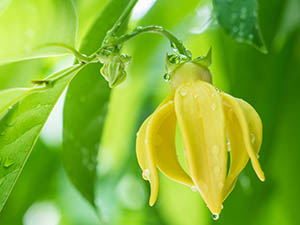When a new patient walks through the door of the Sears Institute for Anti-Aging Medicine, they’re usually taking at least one medication they don’t need.
But sometimes a new patient is taking a dangerous prescription drug for a disease they don’t have — and that gets my blood boiling.
I’m talking about high blood pressure — also known as hypertension. Doctors like to call it “the silent killer.”
I’ve seen so many patients who are taking dangerous high blood pressure prescription medications…
In fact, more than half of all people aged 55 and up, and two-thirds of people 65 and older are diagnosed with hypertension. And the number continues to rise with age.1
But here’s the thing…
Not everyone who is diagnosed with hypertension actually has it.
A study by researchers at the University of Montreal Hospital Centre (CRCHUM) found that more than half of family doctors are still using outdated manual cuffs to measure blood pressure, which often leads to misdiagnosis.2
That means up to 20% of patients may be misdiagnosed with hypertension — and are taking dangerous medications for a disease they don’t have.
And if you’re diagnosed with high blood pressure, there are four different types of drugs your doctor might prescribe.
- Diuretics are simple water pills. They remove water from your bloodstream. They can cause weakness, dizziness, muscle cramps, impotence, gouty arthritis, diarrhea, joint pain and more.
- Calcium channel blockers cause your arteries to relax and dilate. This reduces blood pressure and improves circulation. At the same time it slows the heart rate.
Studies show that people taking calcium channel blockers have a 60% increase in heart attack compared to people who used other blood pressure meds.3 Other side effects include headache, flushing, constipation, nausea, high cholesterol, edema and low blood pressure.
- ACE inhibitors are supposed to cause blood pressure to fall, and the amount of blood pumped by the heart to increase.
These drugs are linked to severe reactions including atrial fibrillation, kidney failure and death.4
- Beta blockers bind to receptors in the heart and blood vessels. They block their response to norepinephrine, a hormone that tells the arteries to tighten and the heart to speed up.
These drugs lower blood pressure by slowing the heart and relaxing the blood vessels. But side effects include fatigue, dizziness, insomnia, nausea, depression and loss of libido. Worse yet, they can raise triglyceride levels, lower HDL cholesterol and cause heart palpitations.
Try These Two Flowers to Beat Big Pharma’s Blood Pressure Drugs
If you suspect you’ve been misdiagnosed with hypertension, talk to your doctor and track your blood pressure at home. It’s important to get the diagnosis right. Here are two natural treatments that are safe to take whether you have high blood pressure or not.
- Try hibiscus tea for hypertension. If you live in a tropical or subtropical area — like I do here in South Florida — you may have hibiscus growing in your yard. But there’s much more to this flower than just a pretty addition to your garden.
Drinking hibiscus tea is an effective way to maintain healthy blood pressure.
I recommend drinking two cups of hibiscus tea every day. You may also see it called sour tea, red tea or red sorrel.
You can make your own hibiscus tea by steeping the petals of fresh or dried hibiscus flowers for 10-15 minutes. The brewed tea will have a tart taste almost like cranberry.
- Sip cananga (ylang-ylang) tea to lower blood pressure. Cananga is a holy flower for the Balinese. It’s frequently used for offerings in Bali, and it’s often used as a ceremonial flower.
But it also lowers blood pressure.5
If you live in the south, you can grow ylang-ylang. Young plants are sold on sites like toptropicals.com and rareflora.com, or you can visit gardenweb.com or davesgarden.com.
My friend Lelir from Bali taught me a simple way to make a lovely cananga tea. All you need are 10-15 grams of ylang-ylang flowers that have not bloomed yet (they will still be slightly green). Add a bit of ginger and pepper, and crush it together. Then boil some water and strain it through the ylang-ylang mixture.
Sip and enjoy!

My friend Lelir in Bali taught me how to make a cananga tea to lower blood pressure.
To Your Good Health,

Al Sears, MD, CNS
References
1. Centers for Disease Control and Prevention. High Blood Pressure Facts. Page last reviewed: November 30, 2016.
2. Kaczorowski J, et al. “How do family physicians measure blood pressure in routine clinical practice? National survey of Canadian family physicians.” Can Fam Physician. 2017;63(3):e193-e199.
3. Psaty BM et al. “The risk of myocardial infarction associated with antihypertensive drug therapies.” JAMA. 1995;274(8):620-625.
4. Segall L, et al. “Heart failure in patients with chronic kidney disease: A systematic integrative review.” Biomed Res Int. 2014;2014:937398.
5. Tan LT, et al. “Traditional uses, phytochemistry, and bioactivities of Cananga odorata (Ylang-Ylang).” Evid Based Complement Alternat Med. 2015;2015:896314.

